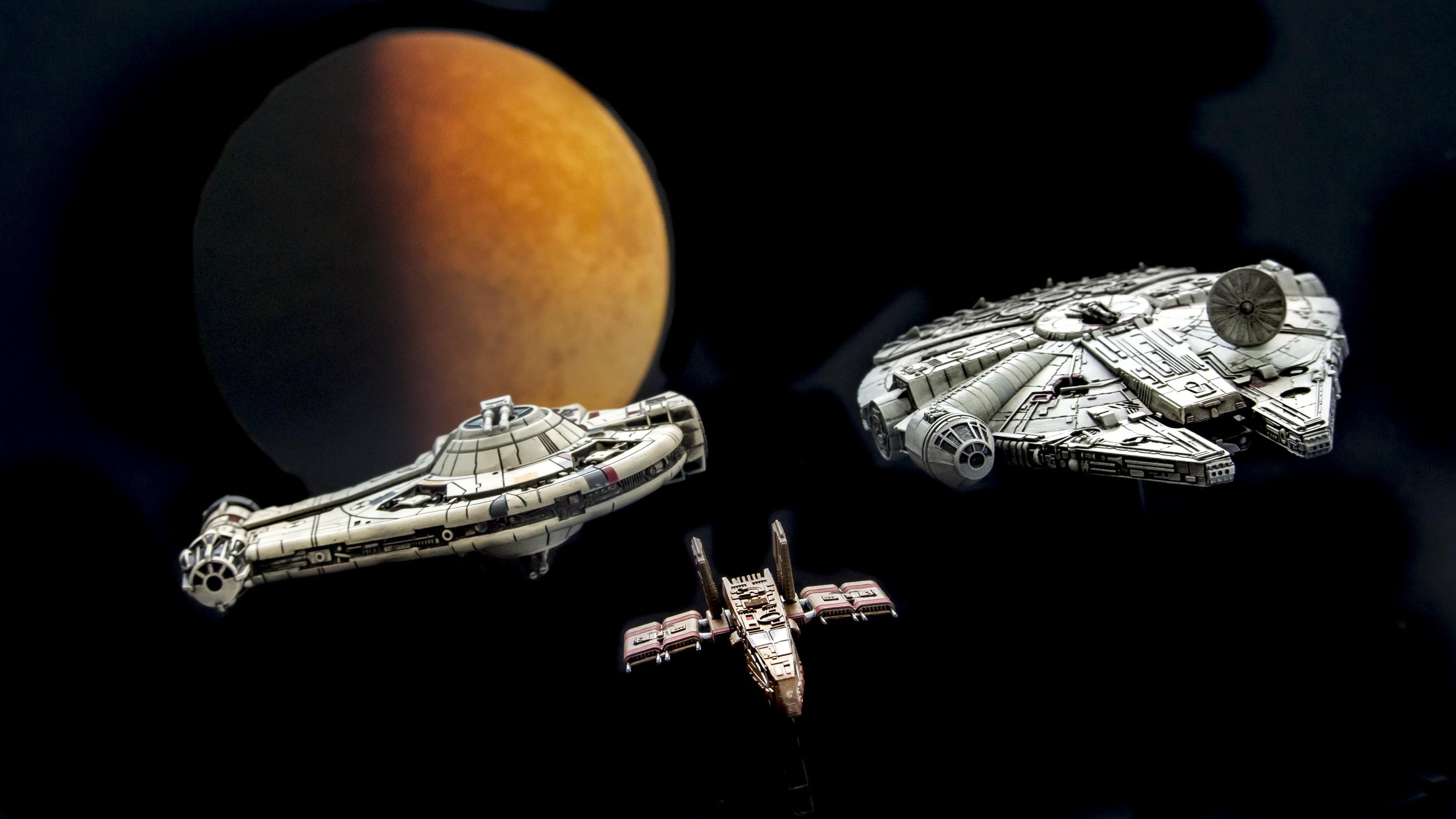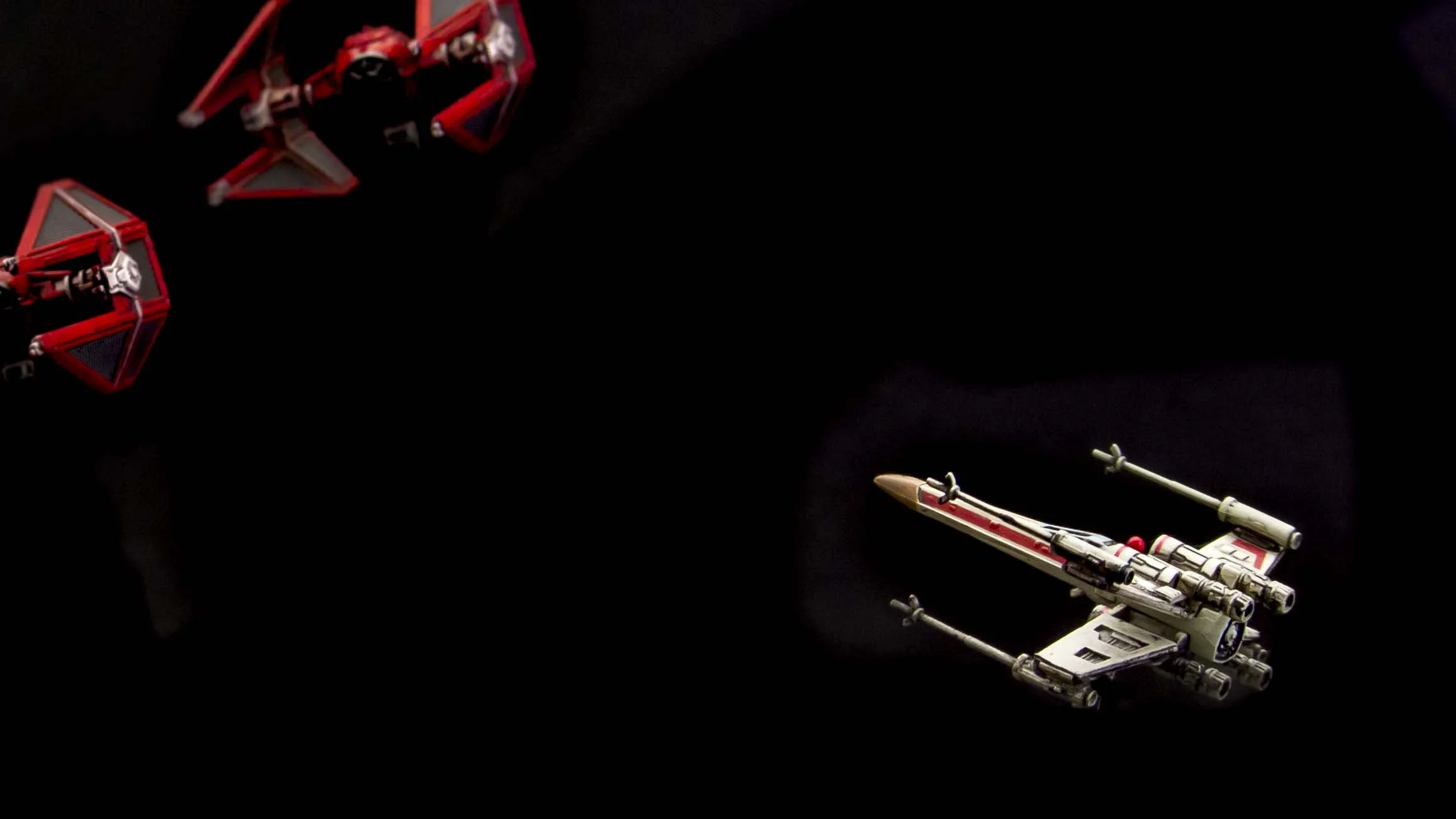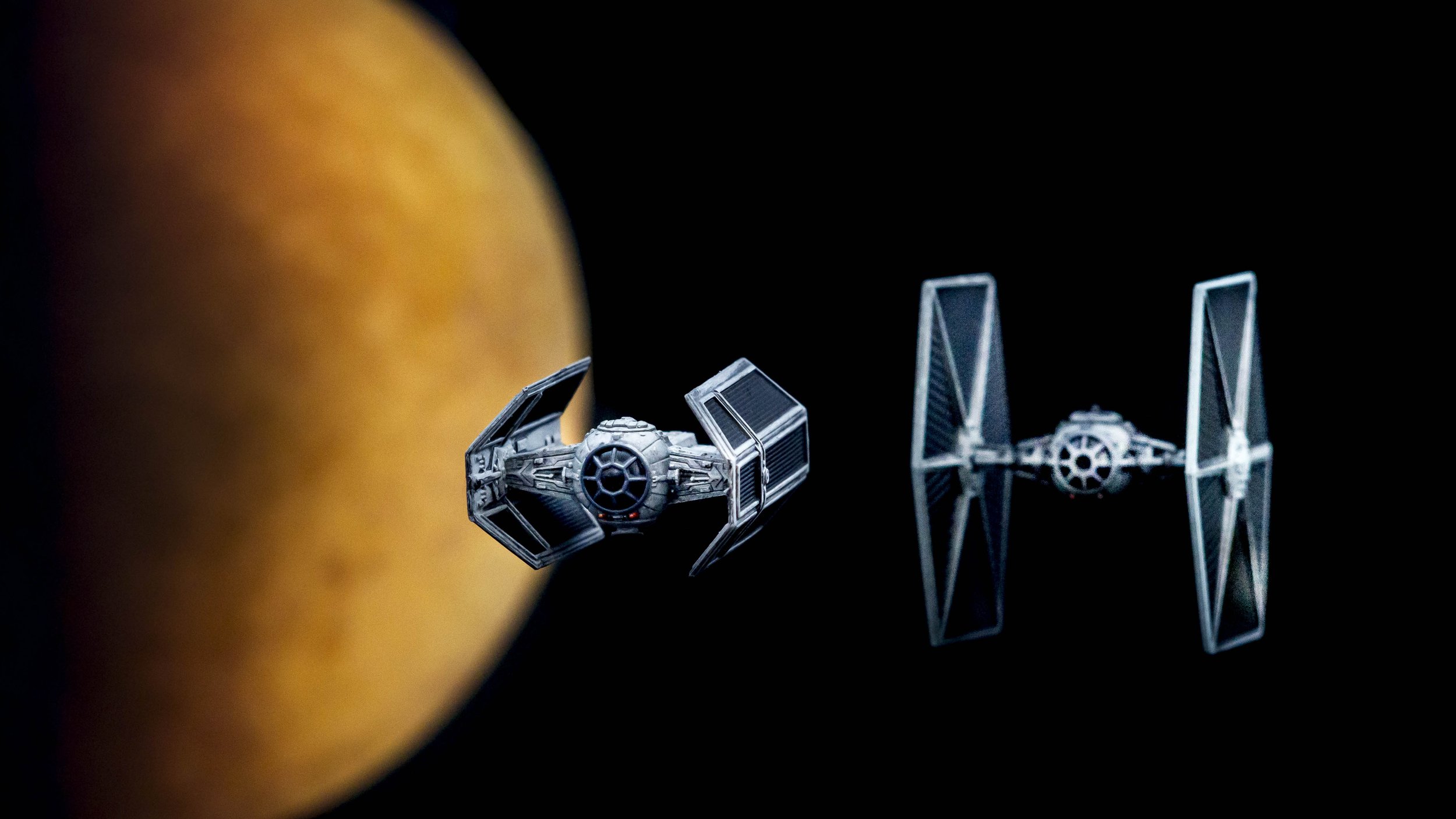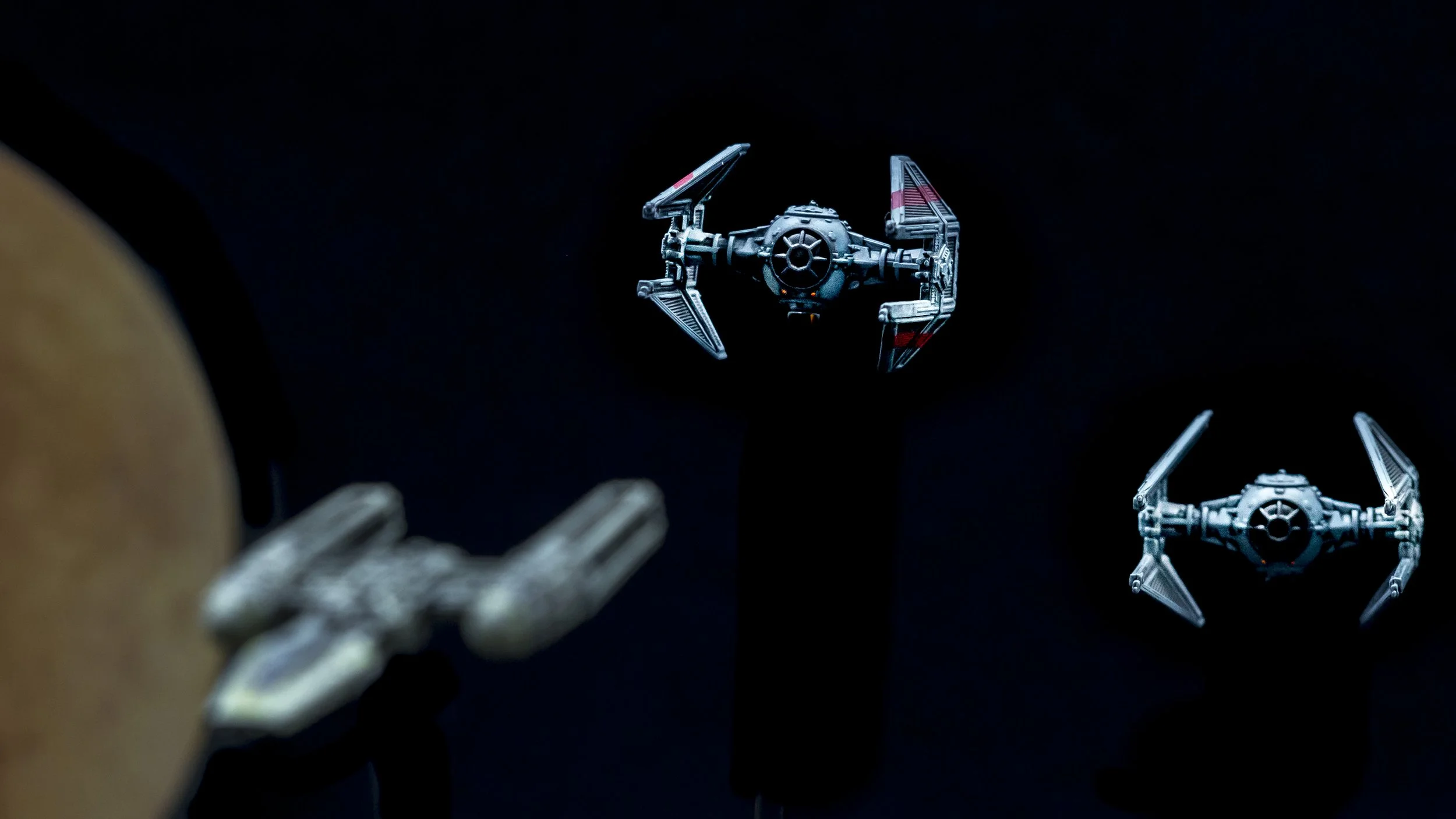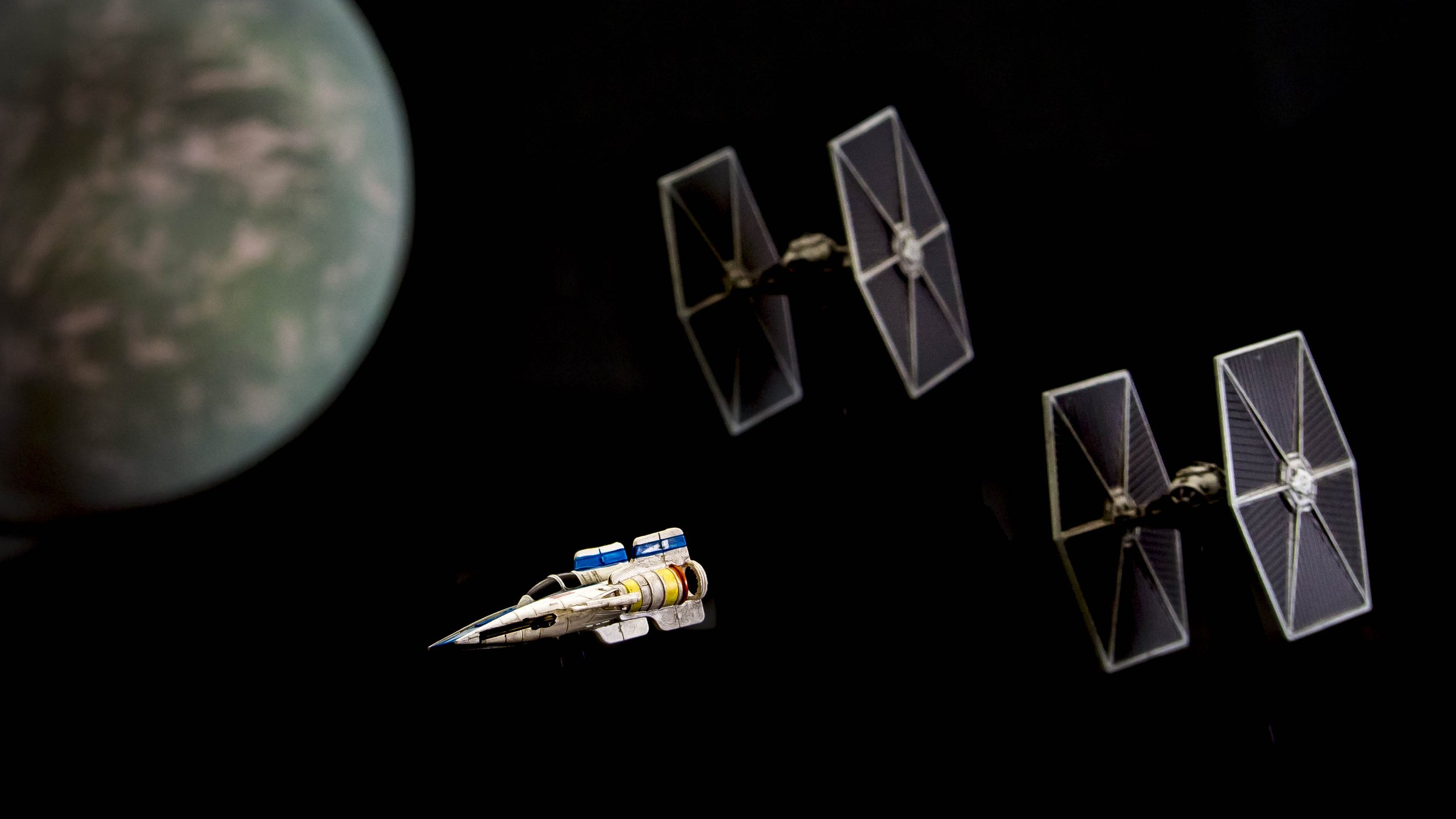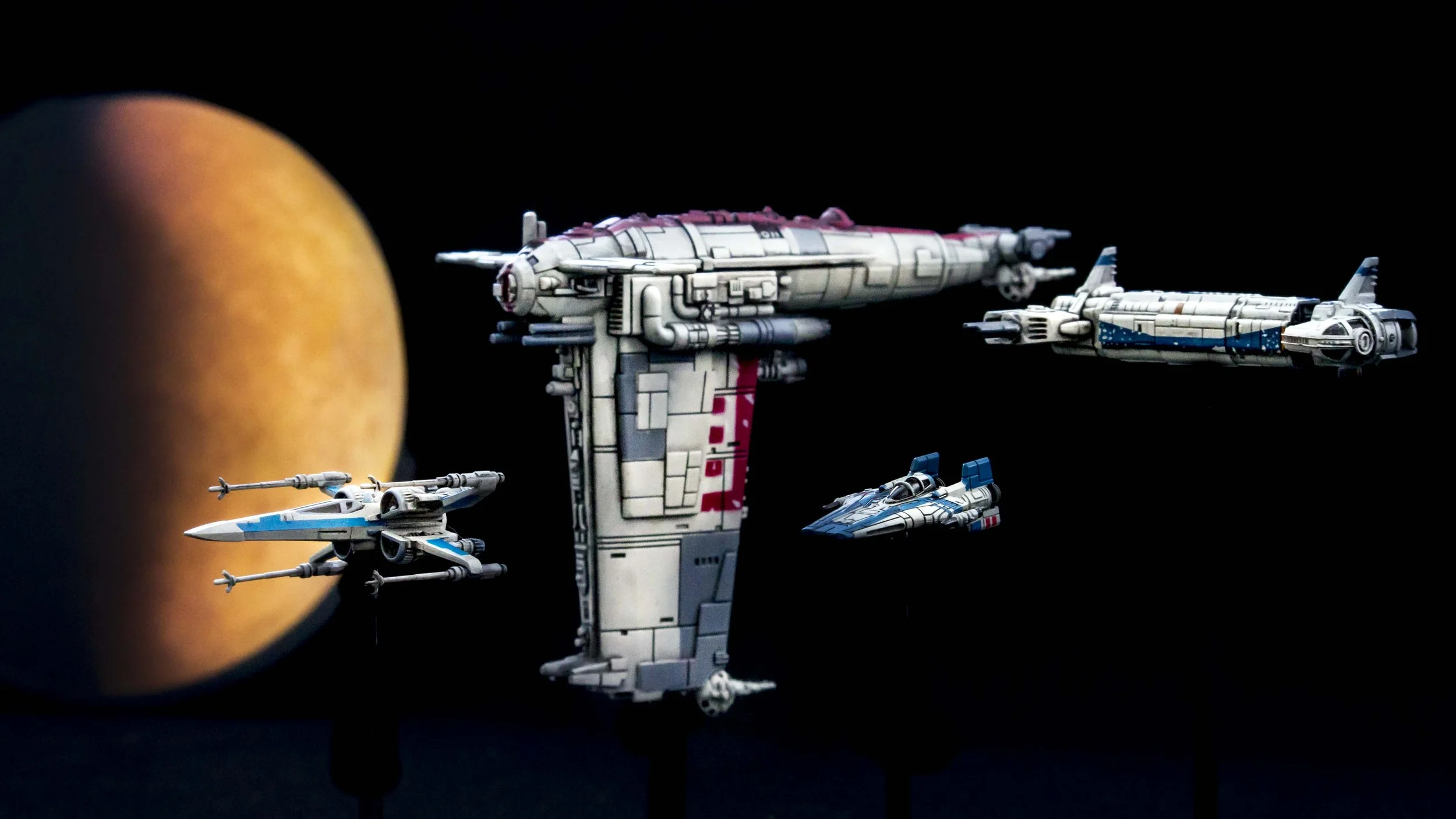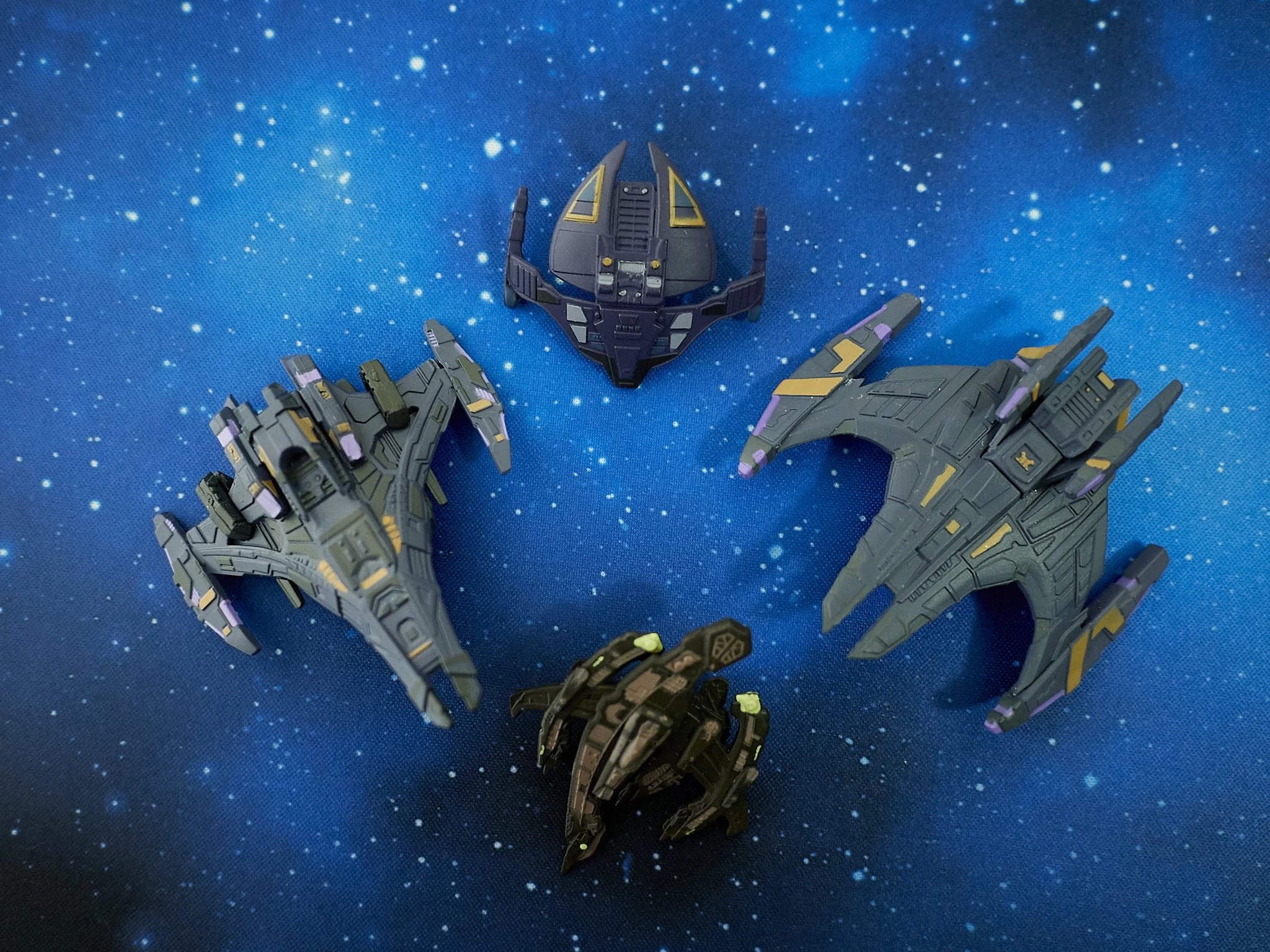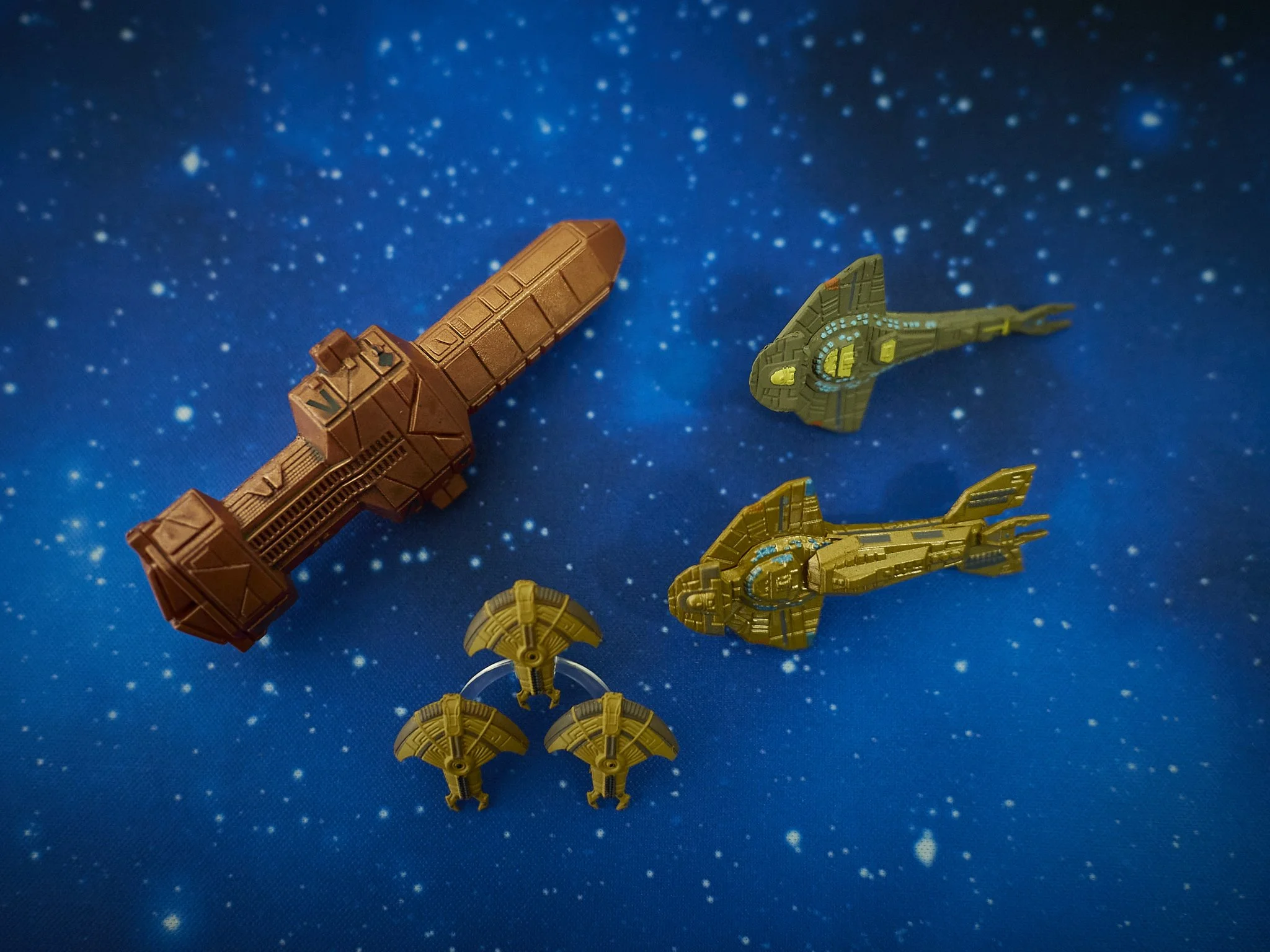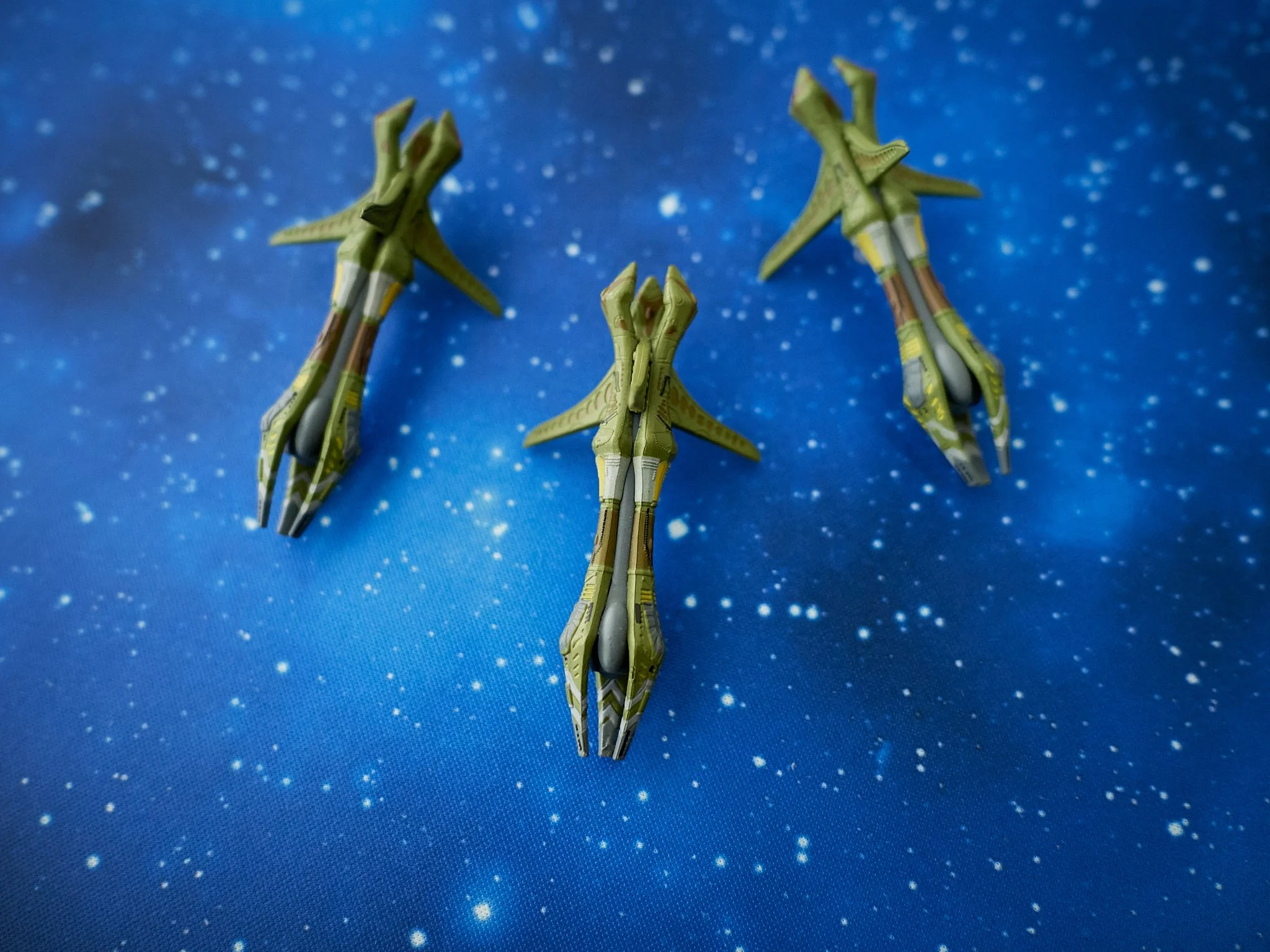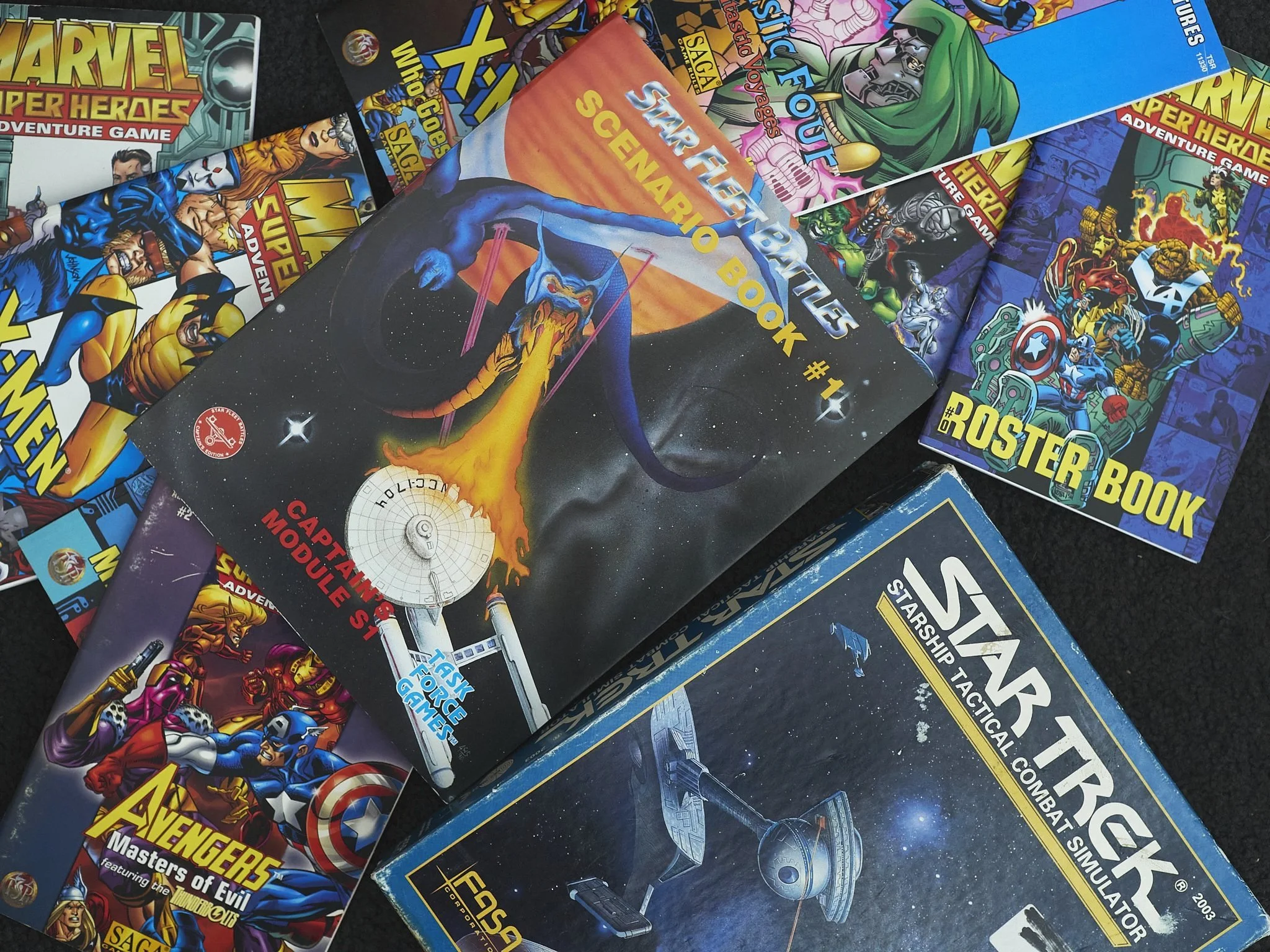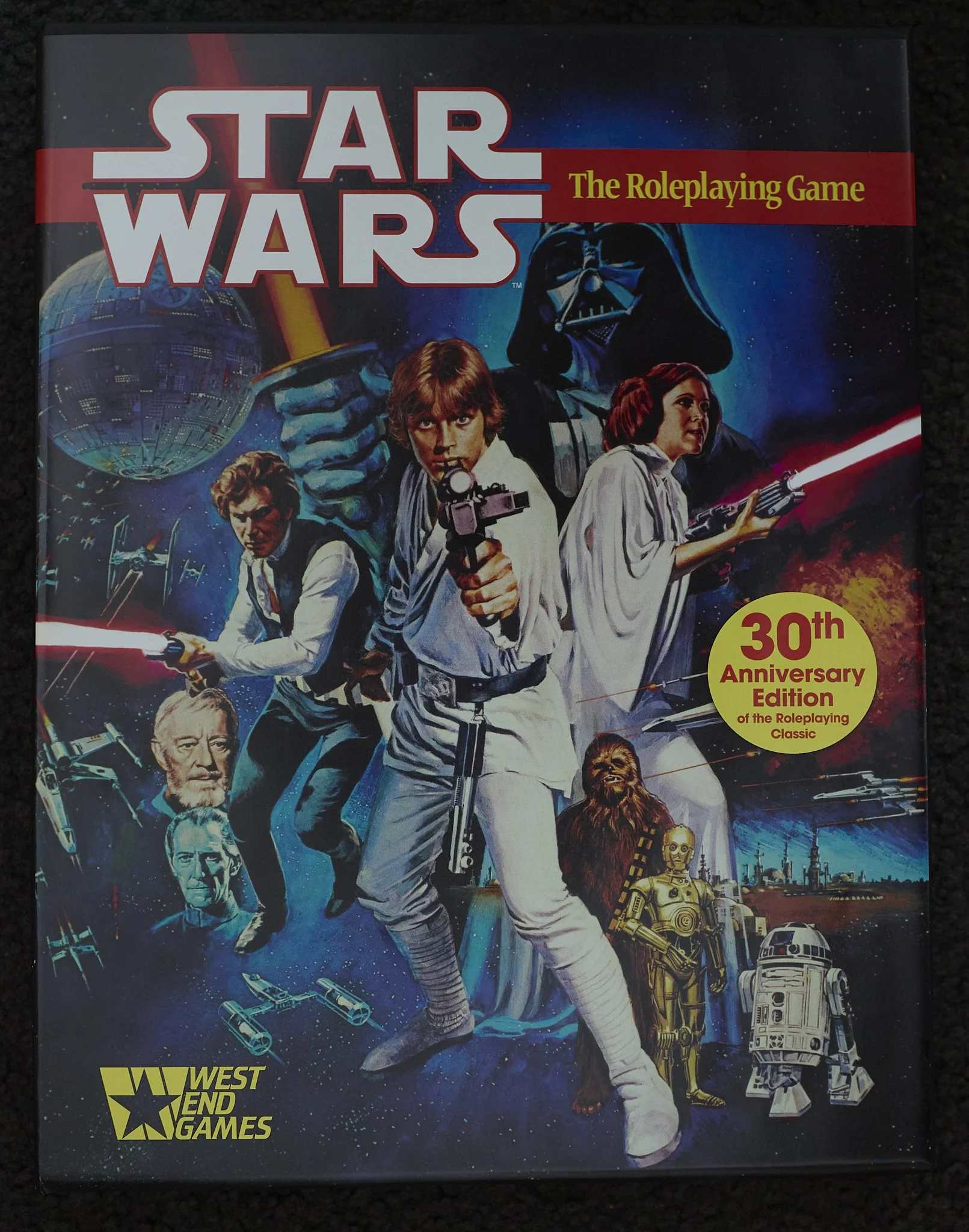The Rebels counter the Empire with a more balanced, if less exciting fleet. Every ship has a Target Lock and Shields, their Pilots, Droids and Crew excel at Squad synergy, but few have re-positioning options and they are on average the slowest fleet (three ships with Red speed 4).
Fly straight and true and get them on the first pass, or possibly pay the price.
The X-Wing.
Name-sake ship of the game, the X-Wing was one of the first to fall away from the tournament circuit. Lack of re-positioning meant the upgrade slots were usually spoken for, which later fixes helped address, but still, too messy and/or too late.
In BB, partly created to re-empower this ship and other early ships in their original form, the X-Wing becomes a stable, if unexciting ride for a bunch of strong pilot Talents (remember no EPT’s, so Pilots rule supreme) and named Droids to match. Flying X-Wings well is a matter of a good supportive squad dynamic, so it is a perfect teaching tool.
Red Right Hand
34 X-Wing; Luke (8) + R2-D2 + Advanced Proton Torps
32 X-Wing; Biggs (5) + R2-F2 + PT
33 X-Wing; Garvin (6) + R5-P9 + PT
The classic trench run crew
The Y-Wing.
The Y-Wing has two roles, Ordnance carrier or a Turret platform. Twin Laser Turrets are in BB and are one of the most powerful upgrades and Turret upgrades are limited to the Rebels only (YW and HWK), making them effectively a cheap Decimator or Falcon “lite”, but with no generic Droids (FAA/R2’s), Mods or EPT’s, they are sluggish and predictable at best with a true tri-colour dial.
Does not seem fair, but it’s the classic turret vs arc dodger dynamic.
Y-Not
28 Y-Wing; Dutch (6) + Plasma Torpedoes + ABT
72 3x Y-Wing; Gold Squadron Pilot (3) + Plasma Torps + ABT
or
Phew Phew
38 Y Wing; Horton + TLT + R5-P9 + Proton Torps
31 Y Wing; Grey Squadron Pilot (4) + TLT + R5-K6 + Plasma Torps
31 Y Wing; Grey Squadron Pilot (4) + Blaster Turret + R4-D6 + Advanced Proton Torps
The A-Wing.
This is the Rebel exception, like the Tie Striker is to the Empire, zipping around the table like it just don’t care. Like the Interceptor, the other manoeuvre king, the A-Wing stands out in BB as it should as the undisputed speed boss.
Fun.
With Jake Farrell (double Boost or Roll/Boost), or “no stress” Tycho, or even exceeding the 3d Agility ceiling with Gemmer and the only ship in BB that can take Proton Rockets (limited to Rebels), it is the special little snowflake that makes a Rebel Squad fun.
Not Easy Being Green
29 HWK-290; Kyle (6) + Jan + TLT
27 A-Wing; Jake (7) + Proton Rockets
44 2x A-Wing; Green Sq Pilot (3) + PR
The B-Wing.
Second in the fun stakes for the Rebels, the B-Wing is the close quarters knife fighter. It has more red moves than green, but specialises in close quarters and also has the distinction of having more Shields than Hull. Advanced Sensors with their dial allows them to avoid losing their Action to a common red move and FCS or Accuracy Corrector often aligns with their payload.
Blue Day
100 4x 25 B-Wing Blue Sq Pilot (2) + Advanced Sensors
(optionally it can have 3 and Roark or Kyle from below)
The HWK-290.
Even more so than the Imperial Lambda, the HWK is primarily a support ship, sporting the only single digit Primary, a slow and poor dial, no re-positioning, not even a K-turn and minimal defence stats. What it has going for it is cheap cost, some of the best supportive Pilots and Crew and a Turret upgrade. BB makes even this ship a contender in a balanced squad.
Training Day
24 HWK-290; Roark (4) + Blaster Turret
21 X-Wing; Rookie Pilot (12/2)
22 Blue Squadron Pilot (12/2)
2x 17 A-Wing; Prototype Pilot (12/1)
The gang is back in town.
The YT-2400.
The mini-Falcon, the YT-2400 has several interesting features. Without Title, it offers the dual punch of a 2 dice Turret Primary, a Cannon and Missiles, a solid constitution, some nimbleness with 12 (!) white moves, and a Crew slot.
Me And Mini Me
53 YT-1300 Han + Chewie + C3-PO
47 YT-2400 Eaden + Luke + CrM + ABC
The YT-1300 (modified)
Not the full “Millennium Falcon” we know and love, well not Titled as such, it is still the big bruiser of the Rebel fleet. The popular and strong Han + C3-PO + Chewie build is possible, a little less potent without Title and Chewie and Lando add their own directions*. It can be a super support, a hunter killer, a fortress or a combination of these.
Who stands out in BB for the Rebels?
R2-D2 (Droid), C-3PO, Jan and Kyle (Crew and Pilot),
*No Chewie because in BB, we often us a simplified combat system with standard hits beings against shields, critical hits applied to hull only, which nullifies some pilots and upgrades. It is optional, but often used for simplified games and makes little real impact.


